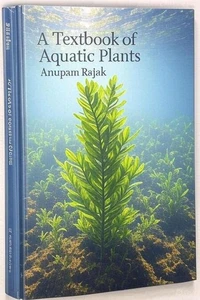This book is usefull to students, schlors, reasearchers, scientists and interested family. The Fabaceae family is economically and ecologically very important family. This family are widely distributed in the world. This families are provide us timbers, dyes and food. The Fabaceae family are medicinally important plants. Grass is a monocotyledon plant mainly grows in the soil. They are found all over the World.
Grass is belong to the family Poaceae. Approximately 12000 grasses species are found in the world. Grasses occupy wide tracts of land and they are evenly distributed in all parts of the world. They occur in every soil, in all kinds of situations and under all climatic conditions. In certain places grasses form a leading feature of the flora. As grasses do not like shade, they are not usually abundant within the forests either as regards the number of individuals, or of species.
But in open places they do very well and sometimes whole tracts become grass-lands. Then a very great portion of the actual vegetation would consist of grasses. The grasses growing in pasture land and the cereals grown all over the world are of more value to man and his domestic animals than all the other plants taken together.
This book is usefull to students, schlors, reasearchers, scientists and interested family. The Fabaceae family is economically and ecologically very important family. This family are widely distributed in the world. This families are provide us timbers, dyes and food. The Fabaceae family are medicinally important plants. Grass is a monocotyledon plant mainly grows in the soil. They are found all over the World.
Grass is belong to the family Poaceae. Approximately 12000 grasses species are found in the world. Grasses occupy wide tracts of land and they are evenly distributed in all parts of the world. They occur in every soil, in all kinds of situations and under all climatic conditions. In certain places grasses form a leading feature of the flora. As grasses do not like shade, they are not usually abundant within the forests either as regards the number of individuals, or of species.
But in open places they do very well and sometimes whole tracts become grass-lands. Then a very great portion of the actual vegetation would consist of grasses. The grasses growing in pasture land and the cereals grown all over the world are of more value to man and his domestic animals than all the other plants taken together.

 , qui est-ce ?
, qui est-ce ?